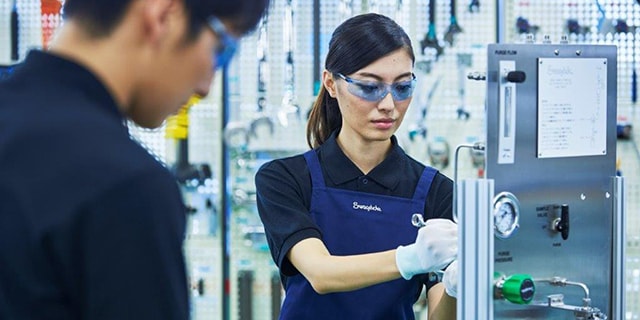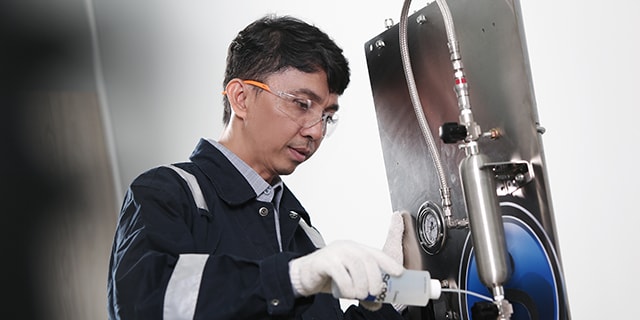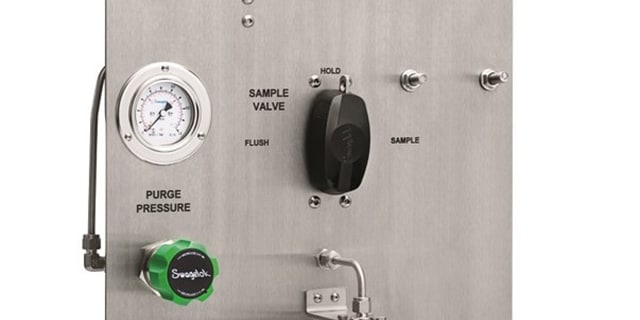Closed Loop Sampling Systems: How to Reduce Emissions

How to Reduce Fugitive Emissions With Closed-Loop Sampling Systems
Unintentional release of emissions into the atmosphere can occur at various locations throughout refineries or chemical plants. And due to increasingly stringent regulatory measures across the globe, there has never been more pressure on plant operators to reduce—if not outright eliminate—these fugitive emissions.
Reaching net-zero emissions is a formidable challenge. Certain applications may require significant rework of major process infrastructure. But elsewhere, there are more attainable solutions. For example, consider the dozens of spot or grab sampling points that may exist throughout a major facility. Depending on your sampling procedures, the quality of the sampling system design, and the operating technician’s skill level, each of these points represents potential for leaks. This potential exists in the form of spillage when sample containers are released or leaks if systems are constructed sub-optimally or with substandard components.
The good news is that fixing leaks and stopping fugitive emissions at grab sampling locations can be relatively simple and cost-effective. Here’s how:
 Closed-Loop Sampling Systems: Efficient, Effective, and Safe
Closed-Loop Sampling Systems: Efficient, Effective, and Safe
Reducing emissions in any chemical or hydrocarbon process fundamentally involves keeping fluids and gases contained within the system. A closed-loop sampling system, when designed and constructed correctly, does exactly that.
Closed-loop systems often represent the best method to help operators reduce emissions and improve safety.

 Qualities of Leak-Tight Sampling Systems
Qualities of Leak-Tight Sampling Systems
A closed-loop system must be designed and constructed properly to minimize leaks at sampling points throughout the facility. There are a few features to look for when selecting a closed-loop system:
Constructed from leak-tight components. A sampling system’s quality depends on the quality of its components. For example, low emission (low-E) valves, which demonstrate through rigorous testing per API standards to minimize fugitive emissions, may be incorporated into your sampling system’s design to minimize the potential for unwanted leaks. Certified low-E valves and other components are becoming increasingly common throughout the industry and in various fluid system applications as emissions regulations become stricter.
Designed and assembled to minimize potential leak points. Even the highest-quality valve or fitting has the potential to leak. By designing systems with as few connection points as possible, however, you can reduce the potential for unwanted leaks and resulting emissions. If leaks do occur where high-quality components have been used, this is typically a result of improper installation practices. Be sure that your grab sampling systems have been assembled and tested by trained specialists to avoid these issues.

In a liquid closed-loop system where samples are collected in bottles, the fluid is commonly dispensed via a needle that pierces a rubber septum. Ideally, as the needle is withdrawn, the rubber septum reforms a complete seal. Lancet point needles are commonly used in these applications, but they may accidentally cut or “core” the septum, allowing fluid to escape. A better needle design option is the pencil point needle, which reduces the potential for cutting the septum with a unique design that discharges the sample through a hole on the needle’s side.
In systems gas or volatile liquid sampling systems where cylinders are used, cylinders that feature easily operable quick connects will allow for efficient and safe connecting and disconnecting from your sampling point.
 Reducing Emissions at Sampling Points
Reducing Emissions at Sampling Points
Well-designed, closed-loop grab sampling systems can limit emissions by preventing exposure of process fluid to the environment. They can also reduce risk to sampling technicians by keeping process fluids fully contained. The right supplier can provide easy-to-use and -maintain panels in standard, configurable designs that can be reproduced across your facilities, not only minimizing emissions and risk, but simplifying operator training and potential for errors.
Interested in learning more about how to reduce leaks and subsequent emissions at your sampling points? Find the closed-loop grab sampling panels, sampling system design training, and troubleshooting support you need by reaching out to a local specialist.
Related Articles

Liquid Grab Sampling Strategies to Control Costs
Discover several strategies to help drive down costs and minimize errors in your liquid grab sampling processes as you validate process conditions and analyze end product quality.

Boost Quality by Selecting the Right Grab Sampling System
Learn how to select the right grab sampling system and other grab sampling basics and best practices to ensure end product quality from Swagelok.

Grab Sampling 101: Reducing Plant Costs
Grab sample systems allow for safe, efficient sample captures—validating your product’s chemical composition. Learn how to improve your closed loop system’s reliability while reducing plant costs with basics from the experts at Swagelok.

